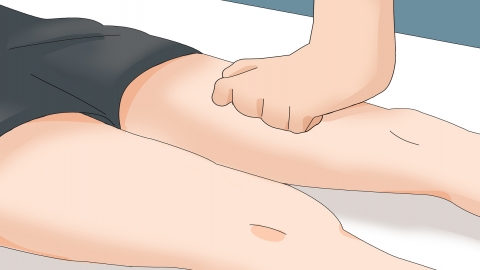What causes a bony prominence or hard lump on the inner side of the lower leg?
Under normal circumstances, a bony prominence or hard lump on the inner side of the lower leg may be caused by normal bone structure, local soft tissue calcification, osteochondroma, tibial periostitis, or bone cysts. If accompanied by pain, swelling, or enlargement of the lump, it is recommended to seek timely medical evaluation at a qualified hospital. Specific causes are analyzed as follows:
1. Normal Bone Structure
The medial side of the lower leg has an attachment site for the tibialis anterior muscle. In some individuals—particularly those with a slender build or specific skeletal development—the bony prominence in this area may be more noticeable and feel like a hard lump upon touch, but without pain or other discomfort. No special treatment is required. It is advisable to avoid external trauma to the area and wear loose clothing to reduce friction.

2. Local Soft Tissue Calcification
If there is a history of prior injury to the inner lower leg, calcium deposits may form during the healing process following bleeding or inflammation, leading to a hard lump and a sensation of bony protrusion. Applying warm compresses appropriately can help improve local blood circulation. Avoid strenuous exercise. For mild pain, topical application of diclofenac diethylamine gel may provide relief.
3. Osteochondroma
This is a common benign bone tumor that mostly occurs in adolescents, typically appearing at the proximal or distal end of the tibia. It presents as a hard, bony protrusion and is usually asymptomatic. Diagnosis is confirmed via X-ray imaging. If the tumor shows no signs of growth and causes no discomfort, regular follow-up examinations are sufficient. However, if the tumor grows or compresses surrounding tissues, surgical removal (osteochondroma excision) may be necessary.
4. Tibial Periostitis
Excessive or improper physical activity over a prolonged period can lead to traction and injury of the periosteum on the medial side of the tibia, causing inflammation. This may result in localized swelling and a palpable hard mass, along with pain during exercise. Reduce physical activity and avoid high-impact movements such as jumping or running. Under medical guidance, medications such as celecoxib capsules, ibuprofen sustained-release capsules, or Huoxue Zhitong capsules may be used. Additionally, ultrasound therapy can aid recovery.
5. Bone Cyst
A bone cyst is a benign bone lesion that can occur in the tibia, presenting as a localized bony protrusion with a palpable hard mass. Larger cysts may cause mild pain or limb weakness. Diagnosis is confirmed through CT or MRI scans. Small cysts can be monitored regularly. For larger cysts, treatment options under medical supervision include intralesional injection of methylprednisolone sodium succinate or surgical curettage and bone grafting.
In daily life, maintain moderate exercise intensity and avoid overexertion. Perform proper warm-up exercises before physical activity and stretching afterward to reduce musculoskeletal injuries. Avoid pressing or massaging any abnormal lumps on the inner side of the lower leg. Regularly monitor changes in the lump, and seek prompt medical attention from an orthopedic specialist if abnormalities are noted.




